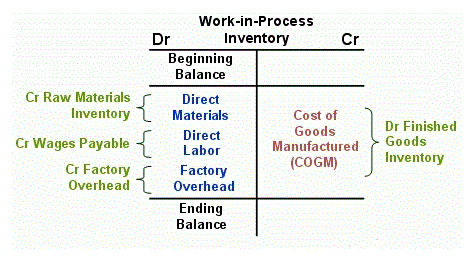
The global adherence to the double-entry accounting system makes the account-keeping and -tallying processes more standardized and foolproof. Think of retained earnings as savings, since it represents the total profits that have been saved and put aside (or “retained”) for future use. Debt is a liability, whether it is a long-term loan or a bill that is due to be paid. Any change to a liability or ownership claim necessitates the performance of https://www.bookstime.com/ analysis with the same structure. The most common sources of revenue are the sale of goods and services, the leasing of real estate, the provision of financial loans, commissions, fees, interest, royalties, dividends, and rent. Our expert help has broken down your problem into an easy-to-learn solution you can count on.

What is your current financial priority?
More specifically, it’s the amount left once assets are liquidated and liabilities get paid off. Owner’s or stockholders’ equity also reports the amounts invested into the company by the owners plus the cumulative net income of the company that has not been withdrawn or distributed to the owners. Share repurchases are https://www.instagram.com/bookstime_inc called treasury stock if the shares are not retired. Treasury stock transactions and cancellations are recorded in retained earnings and paid-in-capital. In this expanded accounting equation, CC, the Contributed Capital or paid-in capital, represents Share Capital. Retained Earnings is Beginning Retained Earnings + Revenue – Expenses – Dividends – Stock Repurchases.
- The double-entry practice ensures that the accounting equation always remains balanced, meaning that the left-side value of the equation will always match the right-side value.
- As expected, the sum of liabilities and equity is equal to $9350, matching the total value of assets.
- The bread and butter lies in freeing up your human labor to work on value-based tasks, while automating manual processes.
- These equations, entered in a business’s general ledger, will provide the material that eventually makes up the foundation of a business’s financial statements.
- After the company formation, Speakers, Inc. needs to buy some equipment for installing speakers, so it purchases $20,000 of installation equipment from a manufacturer for cash.
Accounting Equation Explained – Definition & Examples
An accounting transaction is a business activity or event that causes a measurable change in the accounting equation. Merely placing an order for goods is not a recordable transaction because no exchange has taken place. In the coming sections, you will learn more about the different kinds of financial statements accountants generate for businesses. When the total assets of a business increase, then its total liabilities or owner’s equity also increase. Here we see that the sum of liabilities and equity equals the total assets and the equation balances. Although the balance sheet always balances out, the accounting equation can’t tell investors how well a company is performing.

What Are the 3 Elements of the Accounting Equation?

Double entry system ensures accuracy and completeness in its accounting system. This methodical approach is fundamental to the accounting system’s integrity. If the total liabilities calculated equals the difference between assets and equity then an organization has correctly gauged the value of all three key components. Liabilities are financial the accounting equation may be expressed as obligations or debts that a company owes to other entities. Liabilities are an essential component for an organization to ensure smooth business operations.They are recorded in the balance sheet and are categorized as current and long-term liabilities based on their due date. Assets represent the valuable resources controlled by a company, while liabilities represent its obligations.
- Although the balance sheet always balances out, the accounting equation can’t tell investors how well a company is performing.
- In order to carry out its operations, such as production and sales, the company uses its assets.
- Equity denotes the value or ownership interest on residual assets that an organization’s owner or shareholders would receive if all liabilities were paid.
- An accounting transaction is a business activity or event that causes a measurable change in the accounting equation.
- This number is the sum of total earnings that were not paid to shareholders as dividends.
- Owner’s or stockholders’ equity also reports the amounts invested into the company by the owners plus the cumulative net income of the company that has not been withdrawn or distributed to the owners.
Creditors have preferential rights over the assets of the business, and so it is appropriate to place liabilities before the capital or owner’s equity in the equation. It can be defined as the total number of dollars that a company would have left if it liquidated all of its assets and paid off all of its liabilities. The accounting equation is fundamental to the double-entry bookkeeping practice. These are some simple examples, but even the most complicated transactions can be recorded in a similar way. Expenses are defined as the amount of money spent on the acquisition of goods or services that are used to produce revenue.
- The brilliance of the double-entry system lies in its self-balancing mechanism, acting as a check-and-balance system to reduce errors and uphold financial data integrity.
- This business transaction increases company cash and increases equity by the same amount.
- Accounts receivable list the amounts of money owed to the company by its customers for the sale of its products.
- Barbara has an MBA from The University of Texas and an active CPA license.
- This formula differs from working capital, based on current assets and current liabilities.













